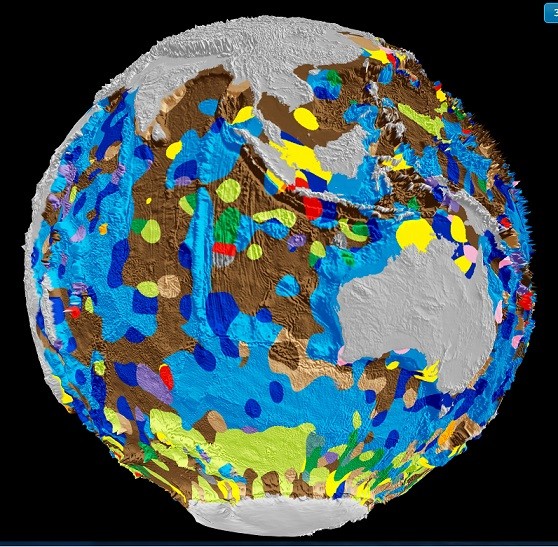Scientists have mapped the first digital geological map of the world's oceans that covers 70 percent of the planet's surface. This data is now open access online where a complete global map can let anyone control it by clicking it.
Scientists and researchers from the School of Geosciences of the University of Sydney and National ICT Australia have successfully mapped out the world's seafloor in digital format since the first mapping of the seafloor was only drawn by hand since the 1970s.
This new map will now allow scientists and to gain a better understanding of the world's oceans especially how the ocean responds to extreme weather and environmental changes such as global warming. Researchers also note that deep ocean basins are more complex than previously imagined.
According to lead author of the study, Adriana Dutkiewicz from the University of Sydney, the team considers the deepest ocean floors as a graveyard of sorts made from microscopic sea remnants from phytoplanktons that dwell in surface waters. This material can help provide data about the processes of how oceans have responded in the past to climate change.
For example, a type of phytoplankton called diatoms apparently produce one fourth of the world's oxygen that humans breathe. This vital contribution in the efforts to fight global warming is larger than land based plants. When these diatoms die, their remains become material found on the ocean floor that lock away carbon.
According to Dietmar Muller of the University of Sydney, this new geology map reveals that these diatom accumulations found on the seafloor are also separate from diatom blooms that thrive on the Southern Ocean's water surface. This means that diatoms are major sources of carbon but its sink or reservoir that is deep under the ocean is yet to be explored more.
These new findings are mostly based on the ocean floor located near Australia where the study also revealed that the Southern Ocean was apparently covered in microfossil leftovers as opposed to a previous belief of clay that was shed from the continent.
The study also spans 50 years of research from data obtained from 15,000 seafloor samples. This new study is published in the journal, Geology.



























